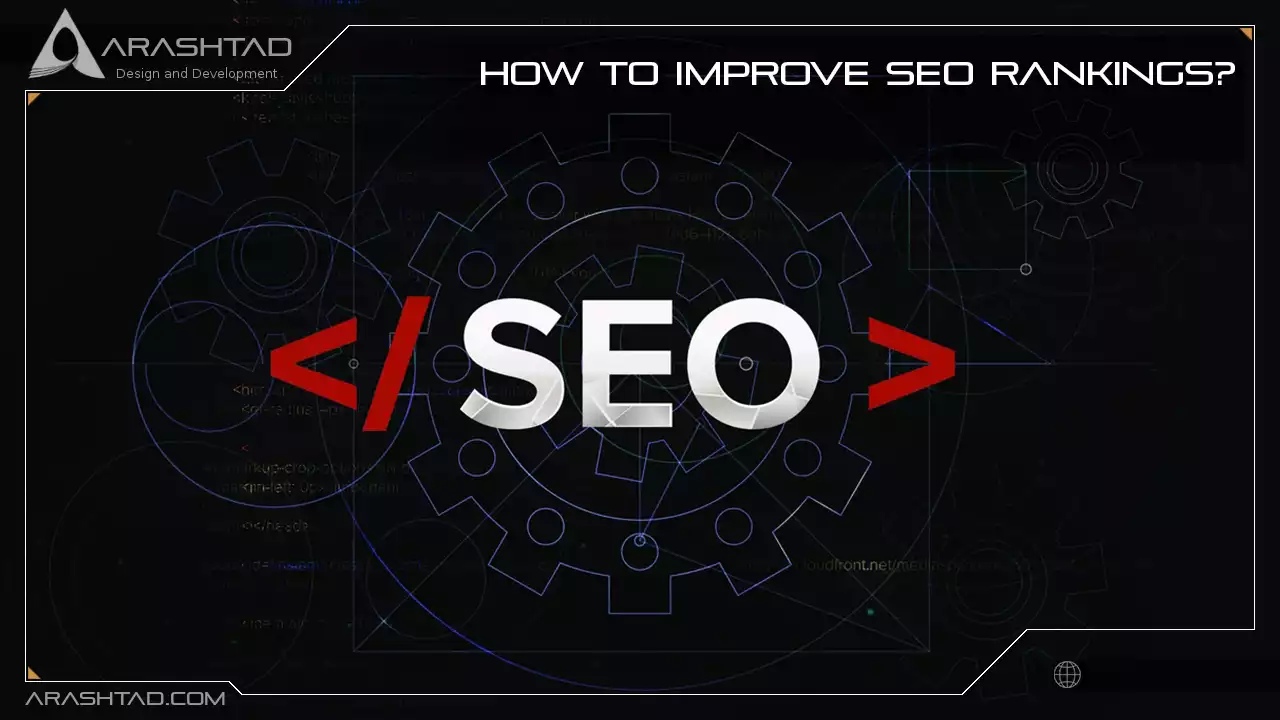How to Improve SEO Rankings?
Search engine optimization (SEO) focuses on creating strategies to help your website rank higher in search engine results pages (SERPs). This makes your website more visible to people searching for solutions provided by your brand, product, or service. This article focuses on SEO, its use cases, techniques, tools, pros, and cons, etc. If you are new to SEO, you will understand the critical role of this powerful tool in creating traffic on your website and putting it on top of SERPs.
What Is Search Engine Optimization (SEO)?
SEO, the acronym for Search engine optimization, refers to the process of optimizing a website to rank higher in search engine results, such as Google. Optimizing your website makes people more likely to find it when searching for related products or services on Google, Bing, and other search engines. In search engine results pages (SERPs), companies compete for the top of the first page, where they are most likely to attract attention. Google’s SERPs often feature advertisements at the top of the page. Business owners are willing to pay for these positions to guarantee placement on the first page. Following advertisements are regular search listings, referred to as organic search results by marketers and search engines.What Is SEO Used For?
The purpose of SEO is to increase a website’s organic search results, thus driving organic search traffic to the site. As a result, data marketers can differentiate between organic search traffic and traffic from other sources, such as paid search, social media, and referrals. Because users are actively searching for a particular topic, product, or service, organic search traffic is generally higher quality traffic. This can result in better engagement with a brand if a user finds the site through a search engine.How Does SEO Work?
Web crawlers of Search engines, such as Google bots, download and store information in a database known as an index. Based on the search query, the search engine pulls and displays relevant information to the search query. A search engine’s algorithm determines which pages should appear in its SERP based on its index of web pages. These algorithms utilize thousands of ranking factors to determine their SERPs’ rankings. However, Links, Content, and Page Structure are the three key metrics used by search engines to evaluate websites.Page Structure Impact on SEO
As websites are written in HTML, the structure of the HTML code impacts the search engine’s ability to evaluate them. To improve their SEO, site owners can include relevant keywords in the page’s title, URL, and headers and ensure that their site is crawlable.The Role of Link in SEO
Links from other websites greatly influence a site’s ranking in Google and other search engines. When a site is linked to several other sites, it gains authority (called “PageRank” in Google) in search engine results, especially if those sites that link to it are themselves authoritative.Content Role
To determine if a webpage is relevant for a given search query, search engines evaluate its content; SEO includes writing content that targets the keywords that users search for in search engines.What Techniques Are Used in SEO?
1- Link Building
The critical lever of SEO is obtaining high-quality backlinks, as they are one of the main ranking factors in Google and other major search engines. Because providing search engines with the ability to find and index your content. Also, users can explore the web and find content that interests them.2- Optimized Content
Content relevant to readers’ search queries and quality content will help pages appear higher on SERPs. Since Google and other search engines place a high value on quality content, you should research what content is already available and create a compelling piece of content. It is more likely that good content will be shared on social media and attract links if it is good content.3- Keyword Research
To optimize existing content and create new content, businesses need to identify the terms searchers use in Google searches and other search engines. Businesses should concentrate on keywords that receive high search volume to be relevant for search engines; identifying the top-performing keywords of competitors is also an excellent way to develop a competitive strategy.4- Increase Website’s Loading Speed
Obviously, if you want to rank higher on Google, you must have a fast-loading site. Google’s PageSpeed Insights can give you a quick benchmark of how fast your site loads, and WebPageTest.org can help you discover the factors that are slowing your site down. With these two tools, you can see how your site’s specific page speed issues can be resolved. Below are a few tips that usually speed up the process.Reduce the size of your site’s images by compressing them.
You can make a huge difference by moving to a better host.
Reduce the size of web pages.
Delete unnecessary scripts from third parties.
5- Create an Internal linking Structure
When used properly, internal links can boost your rankings because they establish a hierarchy of information for your website and help Google understand the content of your page. In SEO, adding internal links to pages that need a boost from your top-ranking pages is a best practice.6- Site Architecture Optimization
In SEO, internal links (links within one’s website) also play a significant role. In addition to external links, internal links also play a big role. Consequently, a search engine optimizer can enhance a site’s SEO by linking to key pages and using appropriate anchor text in these links to improve relevance for specific keywords. By creating an XML sitemap, search engines can also discover and crawl all of the site’s pages better.7- On-Site Optimization
The page’s structure is one factor that can greatly improve SEO in addition to off-page factors such as links, and it is entirely under the webmaster’s control. In addition to optimizing the page’s URL to include keywords, updating the title tag to incorporate relevant search terms, and using the alt attribute to describe images, on-page optimization techniques are common. You can also increase click-through rates by updating meta tags (such as the meta description tag) on your page– these tags do not directly impact search rankings, but they can increase click-through rates.The above techniques are among the top seven techniques. However, other techniques could help you create a better website using SEO.
Top Free SEO Tools
1- Yoast SEO WordPress plug-in
It is a free plugin for WordPress that adds structured data to your website pages. Yoast allows you to grade content in real-time; Essentially, it ensures you use your keyword in the right places, such as headings, meta tags, meta descriptions, etc.2- SEMRush
There are many features in SEMrush’s SEO tool. While most of them require a paid account, SEMrush offers free tools like SEO Content Templates, Position Tracking, Keyword Magic Tools, Site Audit, On-Page SEO Checker, Listing Management, and SEO Writing Assistant for free.3- Ahrefs
Ahrefs offers a range of free and paid SEO tools, including a free backlink checker, a free broken link checker, a free keyword rank checker, and a free keyword generator.4- MozBar
If you create an account with MozBar, a free Chrome extension that can tell you what Page Authority, Domain Authority, and Spam Scores are for any given page or site. This is particularly useful when checking out the competition since it will tell you how hard it might be and how many quality backlinks you might need to build to get a good ranking.5- Keyword Tool
There is also Keyword Tool, which provides free keyword suggestions and paid subscriptions that provide information on search volume and keyword difficulty.6- Google Analytics
Your website’s performance and visibility in search can be analyzed in real-time with Google Analytics, a powerful site analytics tool that incorporates SEO metrics.7- Google Search Console
Google Search Console, a free website analytics tool, measures how well your website performs in Google searches; You can use it to analyze your data, find out your click-through rate and keywords, and submit sitemaps and individual URLs for ranking.Conclusion
In this article, you learned about SEO, what it is, how it works, what it is used for, its tools and techniques, and so on. In summary, By optimizing a website for search engines’ organic rankings, search engines can get targeted traffic to it. Some of the tasks associated with SEO include creating high-quality content, optimizing it for specific keywords, and building backlinks. Essentially, SEO helps sites rank better in .organic search results.Download this Article in PDF format

Arashtad Custom Services
In Arashtad, we have gathered a professional team of developers who are working in fields such as 3D websites, 3D games, metaverses, and other types of WebGL and 3D applications as well as blockchain development.
Arashtad Services
Drop us a message and tell us about your ideas.
Fill in the Form
Blockchain Development



